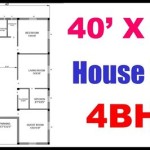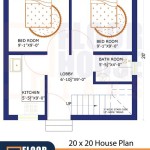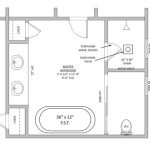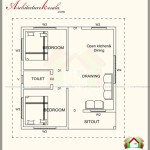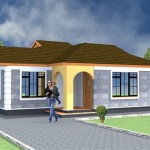Tiny Home Plans With Basements: Expanding Space in a Small Footprint
The popularity of tiny homes has surged in recent years, driven by factors such as affordability, minimalist lifestyles, and environmental consciousness. However, the limitations of a small living space can present challenges, particularly regarding storage and functionality. One solution to overcome these limitations is to incorporate a basement into the tiny home design. This approach provides additional square footage without significantly expanding the home's footprint on the land. Tiny home plans with basements present a unique opportunity to maximize usable space and enhance the overall livability of a compact dwelling.
Basements in tiny homes are not merely scaled-down versions of conventional basements. They require careful planning and consideration of various factors, including local building codes, soil conditions, and the intended use of the basement space. The integration of a basement into a tiny home plan can add complexities to the construction process, but the benefits of increased space and functionality often outweigh these challenges. The concept offers a compelling option for individuals and families seeking to downsize without sacrificing essential amenities or storage capabilities.
This article explores the various aspects of tiny home plans with basements, focusing on design considerations, construction challenges, and the potential benefits of incorporating a basement into a tiny home. It will also examine different approaches to basement design and highlight key factors to consider when planning and building a tiny home with a basement.
Design Considerations for Tiny Homes with Basements
Designing a tiny home with a basement requires careful attention to detail and a comprehensive understanding of structural engineering principles. The basement will serve as the foundation of the entire structure, so its design must address issues such as load-bearing capacity, moisture management, and proper ventilation. Furthermore, the design should integrate seamlessly with the overall aesthetics and functionality of the tiny home.
One of the initial considerations is the size and layout of the basement. This will depend on the specific needs of the homeowner and the limitations of the site. The basement could be designed to be the same size as the footprint of the tiny home, or it could be smaller, depending on the desired functionality and budget. The layout should be carefully planned to optimize the use of space and to ensure that the basement is easily accessible from the main living area. Staircase design is crucial, as it must be compact and safe while complying with building codes. Spiral staircases or alternating tread stairs are often considered to save space.
Another important aspect of the design is the foundation system. Common foundation types for tiny homes with basements include poured concrete walls, concrete block walls, and insulated concrete forms (ICFs). Poured concrete walls are durable and provide excellent resistance to moisture. Concrete block walls are less expensive but require more labor to install and may be more susceptible to moisture issues. ICFs offer superior insulation and are relatively easy to install, but they can be more expensive than other options. The choice of foundation system will depend on factors such as cost, climate, soil conditions, and the skill level of the builder.
Proper waterproofing and drainage are essential to prevent moisture problems in the basement. This includes installing a waterproof membrane on the exterior of the foundation walls and providing adequate drainage around the perimeter of the basement. A sump pump may be necessary if the water table is high or if there is a risk of flooding. Ventilation is also crucial to prevent the buildup of moisture and mold. A passive ventilation system, which relies on natural air currents, or a mechanical ventilation system, which uses a fan to circulate air, can be used to ensure adequate airflow.
The design must also consider the integration of utilities, such as plumbing, electrical wiring, and HVAC systems. These systems must be carefully planned to ensure that they are accessible for maintenance and repairs. The placement of pipes and wires should be carefully considered to avoid interference with the structural integrity of the basement. Electrical outlets and lighting fixtures should be strategically placed to provide adequate illumination and power throughout the basement.
Finally, the design should comply with all applicable building codes and regulations. These codes may vary depending on the location of the tiny home. It is essential to consult with a qualified architect or engineer to ensure that the design meets all requirements for structural integrity, fire safety, and accessibility.
Construction Challenges and Solutions
Building a tiny home with a basement presents unique construction challenges that are not typically encountered in traditional home construction. These challenges range from excavation and foundation work to waterproofing and ventilation. Addressing these challenges effectively is crucial to ensuring the structural integrity and longevity of the tiny home.
Excavation is often the first and most challenging step in the construction process. The excavation must be carefully planned to ensure that the basement is properly sized and located. The depth of the excavation will depend on the desired ceiling height of the basement and the slope of the land. It is essential to ensure that the excavation is properly shored to prevent cave-ins. Heavy equipment may be required to excavate the site, which can be difficult to maneuver in tight spaces.
Foundation construction requires precision and attention to detail. The foundation walls must be plumb and level to ensure that the tiny home is structurally sound. Poured concrete walls are often the preferred choice for basements because they provide excellent strength and resistance to moisture. However, they require specialized equipment and expertise to install. Concrete block walls are a more affordable option, but they require more labor to install and may be more susceptible to moisture problems. Insulated concrete forms (ICFs) are another option that offer superior insulation and ease of installation, but they can be more expensive.
Waterproofing is essential to prevent moisture from entering the basement. This includes applying a waterproof membrane to the exterior of the foundation walls and installing a drainage system around the perimeter of the basement. The waterproof membrane should be carefully applied to ensure that there are no gaps or weak spots. The drainage system should be designed to effectively channel water away from the foundation. A sump pump may be necessary if the water table is high or if there is a risk of flooding.
Ventilation is crucial to prevent the buildup of moisture and mold in the basement. A passive ventilation system, which relies on natural air currents, or a mechanical ventilation system, which uses a fan to circulate air, can be used to ensure adequate airflow. A passive ventilation system is typically less expensive to install, but it may not be as effective in humid climates. A mechanical ventilation system is more expensive, but it provides more consistent and reliable ventilation.
Access to the basement can also present a challenge. A traditional staircase can take up valuable space in a tiny home. Spiral staircases and alternating tread stairs are space-saving alternatives, but they may not be suitable for all users. A ladder can be used to access the basement, but this is not a safe or convenient option for regular use. The design of the basement access should be carefully considered to ensure that it is safe, convenient, and space-efficient.
Cost is always a significant consideration in any construction project, and building a tiny home with a basement is no exception. The cost of excavation, foundation construction, waterproofing, and ventilation can add significantly to the overall cost of the project. It is essential to carefully plan the project and to obtain accurate cost estimates from qualified contractors. Value engineering, which involves finding ways to reduce costs without sacrificing quality or functionality, can be used to keep the project within budget.
Potential Benefits of Incorporating a Basement
The addition of a basement to a tiny home offers several potential benefits that can significantly enhance the livability and functionality of the dwelling. These benefits range from increased storage space and expanded living areas to improved energy efficiency and enhanced resale value. Understanding these benefits can help homeowners make informed decisions about whether to incorporate a basement into their tiny home plans.
One of the primary benefits of a basement is increased storage space. Tiny homes often lack adequate storage, which can lead to clutter and a feeling of crampedness. A basement provides a dedicated space for storing items that are not used on a regular basis, such as seasonal decorations, tools, and equipment. This can help to keep the main living area uncluttered and organized. The basement can also be used to store food supplies, reducing the need for frequent trips to the grocery store.
A basement can also be used to expand the living area of the tiny home. It can be transformed into a bedroom, an office, a workshop, or a recreation room. This provides additional space for activities that might otherwise be difficult to accommodate in a small living area. A basement bedroom can provide privacy and separation from the main living area. A basement office can provide a quiet and dedicated space for work. A basement workshop can provide a space for hobbies and crafts. A basement recreation room can provide a space for entertainment and relaxation.
A basement can improve the energy efficiency of the tiny home. The earth surrounding the basement walls can help to insulate the home, reducing heat loss in the winter and heat gain in the summer. This can lower energy bills and reduce the environmental impact of the home. A basement can also be used to house energy-efficient appliances, such as a high-efficiency furnace or a heat pump. The thermal mass of the concrete floor in the basement can also help to regulate the temperature of the home.
A tiny home with a basement may have a higher resale value than a tiny home without a basement. The additional square footage and functionality provided by the basement can make the home more attractive to potential buyers. A basement can also increase the appraised value of the home, which can be beneficial when applying for a mortgage or refinancing the home. The addition of a basement can represent a significant investment that can pay off in the long run.
In conclusion, incorporating a basement into a tiny home plan offers a variety of benefits, including increased storage space, expanded living area, improved energy efficiency, and enhanced resale value. Careful planning and attention to detail are essential to ensure that the basement is properly designed and constructed. While building a tiny home with a basement can present unique challenges, the rewards of increased space and functionality often make it a worthwhile investment.

Small Cottage Plan With Walkout Basement Floor

Think Ahead And Plan For Future Space Requirements By Building Your Tiny Home On A Basement Fo Small House Floor Plans

The Best 2 Bedroom Tiny House Plans Houseplans Blog Com

Simple House Floor Plans 3 Bedroom 1 Story With Basement Home Design 1661 Sf Basementdesignflo One New

Featured House Plan Bhg 3800

Small House Plans And Affordable Designs Tiny Homes

Basement Layout

Our Best Tiny House Plans Very Small And Floor

Stylish And Smart 2 Story House Plans With Basements Houseplans Blog Com

Tiny Homes Plan 360 Expanded

